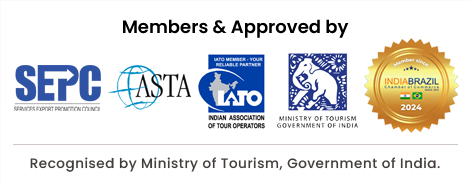I ndia is just not a destination. It is an experience that you will cherish throughout your lives. Embellished with the high altitude Himalayan peaks in the North, glistening backwaters in the south, one of the world’s largest salt deserts in the West, and the world’s largest delta in the East, India will make you fall in love with its majestic beauty. Sprawling with mythology, religious sites, wildlife, architecture, and history, India is a land full of surprises. From white sandy beaches and palm-fringed coastlines of India are renowned for their mesmerizing beauty to water sports activities like scuba diving, parasailing, jet-skiing, etc., the country has got it all for every kind of traveler. Goa, Pondicherry, Andaman & Nicobar Islands beaches offer a perfect beach vacation in India.
Indian Holiday takes you on an engaging journey to this majestic land, where you will get an opportunity to enjoy the rich and varied culinary experience. Land of cultural, geographical, and economic diversity, India is brimming with many tourist places. Come and soak in the luxuries of this wonderland with the Indian Holiday tours. Discover the lavish hospitality of heritage hotels and palaces, explore the trekking trails of high mountainous regions, revel in the spirituality of India, and satiate your taste buds with the sumptuous food with us. India is a treasure trove of age-old traditions. At the heritage hotels of India, you can enjoy the glorious lifestyle of the kings and queens and witness the vibrant culture in its folk dances, music, paintings, and overall lifestyle of the locals. You can get an opportunity to enjoy the vacations in Rajasthan, Kolkata, Hyderabad, etc., like royalty.
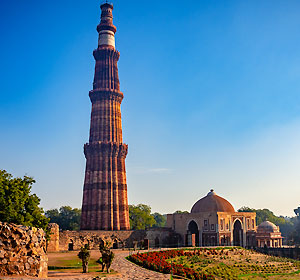
The National Capital, Delhi, is connected to the rest of the country and many places outside India. The city was the capital for several dynasties, which can be seen at the various heritage sites in Delhi - a royal signature of the bygone era. Delhi offers a blend of old and new. Many heritage sites such as Red Fort, Qutub Minar, Humayun’s Tomb, Rashtrapati Bhavan, India Gate, etc., make for incredible sightseeing in Delhi. The Delhi tour highlights the entertainment parks, shopping places, and dazzling nightlife.
Furthermore, the city is home to India’s biggest wholesale market, Chandni Chowk. You can also plan many weekend getaways from Delhi, including Haridwar, Nainital, Corbett, Shimla, Jaipur, Agra, Udaipur, etc. Delhi is the cultural center of India’s different ethnic groups, where you can relish the rich cuisine of different regions of India.
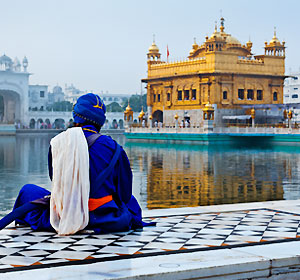
North India is the most popular tourist zone, especially for foreign travelers. The vast region houses various dynasties' architectural triumphs, including the iconic Taj Mahal at Agra. The endless attractions in North India, including royal forts and palaces, charming hill stations, revered pilgrimage sites, snow-capped peaks, exciting deserts, national parks, etc., makes the North India tour unforgettable. This region has a fantastic blend of culture, food, and adventure opportunities with diverse landscapes and varied climates. Indian Holiday offers several North India tour packages, including the Golden Triangle tours that allow travelers to enjoy the authentic charm of this part of India. Here are some of the famous destinations to visit in North India.
Rajasthan - The land of royals is filled with magnificent forts and palaces. Besides, colorful culture, sumptuous cuisine, and shopping experiences make your Rajasthan trip memorable. Unfortunately, the state experiences scorching summer, so the best time to visit the place is from November to February.
Uttarakhand - The beauty of Uttarakhand is truly unparalleled. Home to several picturesque hill stations, Uttarakhand is famous for Char Dham Yatra to Gangotri, Yamunotri, Kedarnath, and Badrinath. For the absolute serenity and natural beauty, Uttarakhand is known as Dev Bhoomi, or the land of God.
Himachal Pradesh - Nestled in the lap of the Himalayas, Himachal Pradesh is among the top destinations in North India. Shimla, Manali, Dharamshala, etc., are some of the beautiful hill stations that make for a romantic honeymoon in Himachal Pradesh. It is a heaven for adventure lovers too.
Varanasi - Home to the famous Vishwanath Temple, this ancient city is regarded as the most sacred place in India. There is a temple at every turn of the city, while boating in Varanasi brings a heavenly delight that soothes your mind and soul.
Ladakh - Immaculate lakes, challenging passes, snow-capped peaks, Buddhist monasteries; there are many attractions in Ladakh to fall in love with this high altitude valley of the Himalayas. Astonishing views, adventure, and Buddhist culture are the prime highlights of the Ladakh tour.
Kashmir - For its eternal beauty, Kashmir is the heaven on earth. The immense natural beauty, lovely people, and Kashmiri handicrafts help surpass the tension in the valley. The sight of long green pastures lined by pine trees and surrounded by snow-capped peaks is breathtaking.
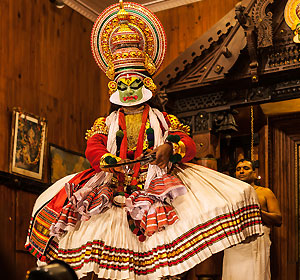
South India is one of the outstanding destinations to travel to. This place boasts of its unmatched culture, Dravidian architecture, and natural beauty. The highly revered temples, the verdant slopes of Nilgiri, and an array of art & culture define the features of southern India. Rich, bright, revered; yet soft & simple; South India is truly exceptional. Like its distinct art and culture, South Indian dishes are delicious like no other famed worldwide. Moreover, this part of India experiences pleasant weather throughout the year. Here are some of the famous destinations to visit in South India.
Kerala - Nature has stored all its glamor in Kerala. Beaches, backwater, mountains, waterfalls, tea garden, wildlife: Kerala has everything to mesmerize its visitors. The eternal beauty of Kerala makes it God's Own Country. While houseboats on Kerala backwater delight honeymooners with blissful charm, Ayurveda resorts in Kerala help you invigorate yourself.
Tamil Nadu - Tamil Nadu is known for the intricately designed temples that are not only revered religious places but also the center of South Indian art & culture. In addition, some lovely hill stations in Tamil Nadu, such as Ooty Kodaikanal, etc., are among the top destinations in India.
Karnataka - Though the high-tech hub is known for shopping and nightlife, the medieval-era cham of Karnataka is unarguably among the best tourist attractions in South India. Mysore Palace, and Bandipur National Park, the capital of the Vijayanagara empire Hampi, are some of the famous places to visit in Karnataka.
Andra Pradesh - Regarded as the Kohinoor of India, Andhra Pradesh is famous for its world-famous Tirupati Temple. The other famous places in the state include Srisailam Mallikarjuna temple, one of the 12 Jyotirlinga temples in India, Visakhapatnam, Araku Valley, Vijayawada, etc., where you can witness the unparalleled natural beauty of this place.

Though known as the country's economic hub, the western part of India offers a distinct culture and abundant natural beauty. The west coast extends from the Arabian Sea to the Western Ghat, with many beautiful cities in the middle. Mumbai, Goa, Rann of Kutch, the cave temples of Ajanta and Ellora, and the Wildlife Sanctuaries in Gujarat are the prime tourist attractions in Western India you can visit for a memorable experience. Take a look at the famous destinations in western India.
Mumbai - Known as the ‘City of Dreams’ for being the center of the Indian film industry - Bollywood, Mumbai is the commercial hub of India. The prime tourist attractions in Mumbai are the Gateway of India, Marine Drive, UNESCO-listed heritage sites of Chhatrapati Shivaji Terminus & Elephanta Caves, Juhu Beach, Film City, etc.
Gujarat - Known as the cultural heart of India, Gujarat is mainly famous for its colorful handicrafts, unique culture, wildlife, the white desert of Rann of Kutch, festivals, food, and several religious sites. The famous places in Gujarat are heritage city Ahmedabad, Sabarmati Ashram, Vadodara, Gir National Park, etc.
Goa - The famous beach city is also known as the fun capital of India. Sun, sand, waves, forts, adventure, music, and nightlife; so many attractions in Goa make it a top travel destination in India. The famous beaches to visit in Goa are Baga beach, Anjuna beach, Calangute beach, etc.
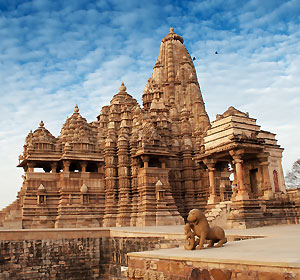
Stretching from the southern Himalayas to the coast of the Bay of Bengal, the eastern part of India offers a distinct charm. Natural beauty, great culture, handicrafts, food, religious places; there are many things to explore in East India. Here are the famous places to visit in eastern India.
Kolkata - Colonial architecture, art galleries, and cultural festivals make the life of Kolkata. Celebrating many festivals with enthusiasm, including the famous Durga Puja festival, Kolkata is known as the city of joy. Here art and culture are a part of life. The famous sites in Kolkata are Victoria Memorial, Indian Museum, Dakshineswar Kali Temple, Science City, etc. You can also visit Shantiniketan, regarded as a prime cultural center of India.
Darjeeling - Known as the tea garden paradise in India, Darjeeling comprises six Ts; Tea, Toy Train, Teak, Tourism, Tiger Hill, and Trekking. In addition, Padmaja Naidu Zoological Park, Peace Pagoda, Ghoom Monastery, and Himalayan Mountaineering Institute are the popular places to explore in Darjeeling.
Kalimpong - This surreal Buddhist town, Kalimpong, is settled above the river Teesta at the Himalayan foothills. This is an East Indian hill town famous for picturesque views, Tibetan handicrafts, and Buddhist monasteries.
Bodh Gaya - Bodh Gaya is a famous Buddhist religious site in the Indian state of Bihar. Gautam Buddha attained Enlightenment 2,500 years ago under a pipal tree known as Bodhi Tree. The sacred Mahabodhi Temple complex is located beside the Mahabodhi Tree.
Madhya Pradesh - Madhya Pradesh is rightly known as the 'Heart of India' that beats with its unique natural and cultural flow. The state is named so because it is placed at the center of the map of India. Enriched with many ancient edifices that reflect the rich art and culture, Madhya Pradesh is a famous tourist destination in India. Home to classic temples, mosques, forts & palaces, museums, and the fantastic rock-cut caves, the beauty of MP is as varied and cosmic as the state itself. Here are the best places in Madhya Pradesh.
Mandu - Resting at the top of a hill, Mandu is famous for its Afghan-style architectural pieces. The major sites in the town include Hoshang Shah's Tomb and the vast Jama Masjid. However, Mandu is a place with a thick wall and Darwajas surrounding the entire city. A historically significant site, Mandu is spotted with many popular attractions like Rupmati's Pavilion, Jahaz Mahal, Nilkanth's Palace, Bagh Caves, Rewa Kund, and Rupayan Museum.
Khajuraho - Khajuraho is unarguably one of the best tourist places in Madhya Pradesh for the famous Hindu and Jain temples. The temples built during the Chandela dynasty display nagara-style architectural design and erotic sculptures. The UNESCO world heritage-listed temples of Khajuraho are recognized worldwide.
Orchha - The former capital city of the Bundela rulers is famous for its impressive palaces and temples of the 16th and 17th centuries. Located on the bank of the Betwa River in the Bundelkhand region, Orchha is steeped in the flow of history. The verdant forests that surround the town attract tourists to this place.
Ujjain - Ujjain is one of the holiest cities in India, situated on the bank of the river Shipra. Historically, it is related to the Gupta dynasty and Chandragupta II, popularly known as Vikramaditya. Spotted with several temples, Ujjain is one of the four places where Kumbh Mela is held. Kalidas lived and created his famous epics.
Sanchi - This Buddhist site is located at a distance of 40 kilometers from Bhopal, the capital of Madhya Pradesh. The ancient town is famous for various temples, monasteries, stupas, and an Ashokan pillar. You can feel absolute serenity while walking inside the large stupas and temples of Sanchi that date back to the 3rd century BC. Bhimbetka is a World Heritage Site with fascinating rock houses of the Mesolithic or stone-age period. The rocks display unique paintings that reflect the traditional lifestyle of the people living in nearby villages.
Bandhavgarh & Kanha National Park - The Bandhavgarh and Kanha National Parks in Madhya Pradesh are two ideal destinations for wildlife enthusiasts. Here you can spot numerous birds, tigers, reptiles, and other mammals in their natural habitat.
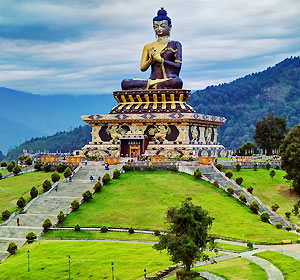
Less traveled, less esteemed, but much more stunning and exciting is the Northeastern part of India. Blessed with nature's bliss, purity, adventure, and captivating experiences, the seven sisters of North East India are the perfect location for a delightful holiday. The landscape offers scenic views, holy shrines, monasteries, lakes, hills, etc. Here’s a list of famous Northeast India destinations you can explore:
Sikkim - Bordered by Bhutan, Tibet, and Nepal, Sikkim offers a dramatic landscape. It is home to India's highest peak Kanchenjunga at 8,586 m above sea level. The amazing topography of Sikkim is created by glaciers, alpine meadows, and thousands of varieties of wildflowers. Exciting Himalayan trails led to hilltop Buddhist monasteries such as Pemayangtse, dating back to the early 1700s.
Tawang - Tawang is the land of breathtaking views of mountains and waterfalls. The flower-filled green meadows, the colorful culture, and significant artifacts allow you to enjoy a great vacation in Tawang. Also, the 400 years old Buddhist monastery has been one of the most popular places to visit in Tawang. Also known as Gaden Namgyal Lhatse in Tibetan, the Famous Tawang Monastery is one of India's largest of its kind.
Shillong - Shillong is the capital of Meghalaya, one of the seven sister states. Meghalaya means the kingdom of the clouds. The white clouds floating over the green mountains, gushing waterfalls, and pristine lakes create an unmatched sight. This mesmerizing charm of nature attracts travelers to visit Scotland of the East, the nickname of Shillong. You cannot find the green mountains and the air so pure anywhere other than Shillong. The famous attractions in Shillong are Umiam Lake, Shillong Viewpoint, Elephant Falls, Cherrapunjee, and Mawlynnong Village.
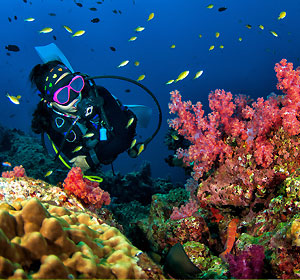
Andaman is a group of islands in the Bay of Bengal, popular as a beach getaway for Indians and foreigners alike. Many unexplored coral reefs, palm-fringed beaches, mangroves, tropical rainforests, and outstanding wildlife make India's preferred beach destination. Andaman offers spectacular scenery, thrilling water sports, and many other delights to enjoy on this island in the Bay of Bengal. You can also visit several places in Andaman, such as Port Blair, Jolly Buoy, Red Skin Island, Ross Island, etc.
USEFUL INFORMATION
All travelers, including business travelers, students, and vacationers, must have a passport to apply for an Indian visa. India issues an E-Tourist Visa to the nationalities of 156 countries for a validity of 1 year with multiple entries. E-Tourist Visa can also be obtained for one month with double entry, non-extendable and non-convertible, and five years with multiple entries (from the date of grant of ETA). You can check the list of the countries in the Government portal.
Apart from tourist visas, other types of visas issued by India are e-Business Visa (one year with multiple entries), e-Medical Attendant Visa & e-Medical Visa (60 days with triple entries), e-Conference Visa (30 days with single entries), and Student Visa (5 years).
Indian Tourist Visas are issued to those who want to visit the country for excursions, sightseeing, holidaying, or yoga training. The people of Indian origin, NRI, the citizens of Bhutan, Nepal, and the Maldives do not require a visa to enter India. To obtain an Indian visa, you need to apply to the Indian embassy with 2 copies of passport size photographs, supporting documents, and a duly attested application form.
BUSINESS HOURS
Government Offices in India remain open from Monday to Friday, and the working hours are from 10:00 AM to 17:00 PM. The operating hours in banks are from 10:00 AM to 14:00 PM from Monday to Friday and from 10:00 AM to 12:00 PM on Saturdays. Banks, Government offices, and some private organizations work on alternate Saturdays.
The working hours in Malls, Restaurants, and bars are generally from 11:00 AM to 20:00 PM. The food establishments and coffee shops in five-star hotels are legally open 24 hours a day.
Local Time: GMT + 5.30
The best time to travel to the plain land of India, beaches, and the Thar desert is from November to February. The monsoon starts in July and lasts till September. During this time, you can visit the hill stations of South India and Northeast India to enjoy the cool, fresh weather and natural beauty.
International airports maintain the standard green and red channels in India. While the green channel is for the passengers who don't have any dutiable goods to declare, passengers with dutiable goods have to follow the red channel. But customs officials are liable for spot-checking passengers passing through the green channel.
If you carry valuable items such as laptops, cameras, and similar items for your personal use, you need to fill in the Tourist Baggage Re-export Form (TBRE) on your arrival in India. This allows travelers to bring such items into India free of duty and return them when they leave.
Travelers over 18 can bring 200 cigarettes or 50 cigars, one liter of spirits, and 250 grams of tobacco per passenger.
While traveling on domestic flights in India, you are not allowed to keep penknives and other sharp objects, liquids, batteries, matchboxes and lighters, and some electronic items like electric chargers in your cabin baggage. So make sure to keep them in your check-in luggage.
TRAVELLERS' BAGGAGE ALLOWANCE
The standard free allowance in the case of the government-owned Indian Airlines is 23 kg in Economy Class, and for First Class, it is 32 kg. However, this may be different based on the airlines and tickets on private airlines.
DEPARTURE TAX IN AIRPORT
You need not pay any tax at the airport as it is included in your ticket price.
The national currency of India is Rupee, and the symbol is INR. One Rupee is further divided into 100 Paisa. The coin's denomination is 1, 2, 5, 10, and 20 Rupees, and for notes, it is 10, 20, 50, 100, 500, and 2000 Rupees.
You can bring foreign currency of any amount into India by submitting a Declaration Form on arrival. But it is prohibited to import and export Rupee and spend it in Duty-Free Shops or onboard aircraft. So keep the Receipts of all currency as you may need to reconvert them on departure.
It is advisable to carry money in the form of travelers' cheques. US Dollars are widely recognized and accepted in India. Most of India's hotels, restaurants, and shops accept major credit cards such as Visa, MasterCard, American Express, and Diners Club that display signage to that effect.
Those traveling from Africa or Latin America should have a valid vaccination certificate for Yellow fever prior to their visit to India. In addition, vaccination for Cholera and Typhoid is recommended before your trip to India. Also, bring a course of malaria pills. And now, with COVID, it is mandatory to have a negative RT-PCR report, not older than 72 hours, for traveling to India.
India is home to some of the world's best hospitals and a pool of expert doctors who provide treatment at an inexpensive rate compared to Europe and America.
Mosquito-borne diseases like malaria, dengue, and Chikungunya are common in India. So taking adequate protection against mosquitoes is recommended when you are outside after the sun. Wear socks, trousers, and long-sleeved dresses to protect yourself from mosquitos and other insects.
Also, pack sunscreens and other lotions for protection from the sun, especially if you are traveling in summer. Insect repellents, water purifying tablets, and medicines for stomach problems or indigestion are also advised for your India trip.
Tap water is not safe for drinking as it may not be purified. It is safe to drink bottled water unless you have a water filter or are sure that it has been boiled. Don't take the ice in your drinks outside your hotel.
Avoid ice cream and other roadside foods, uncooked or half-cooked foods. Eat fruit or vegetables only that can be peeled.
In India, electricity is supplied generally at 220 volts at the frequency of 50 Hertz. The three-pin plugging system has varied socket sizes in the hotels and other places. You may need to get an adapter for your devices.
Though Hindi is the national language, the official language in India is English. Most people in restaurants, shops, and other places can speak English, making it easy to communicate with travelers. Road signs are written in English, Hindi, and regional languages across the country.
Shopping makes for an enjoyable experience in India. You will find small shops, bustling modern malls, and colorful traditional markets in India. Indian Holiday assists guests in visiting the vibrant markets in different regions and exploring the traditional products there.
In India, hand-made products have a unique value using skills and secret craftsmanship practiced for generations. You can look at shining silks and other hand-made fabrics, clothing, hand-knotted carpets, etc. Besides, religious imagery, and decorative articles made from wood, bronze, stone, etc., are among the best things to buy in India. Jewelry, perfumes, leather products, and musical instruments make for great souvenirs of the India tour.
Remember that exporting antiques over 100 years old is prohibited in India. So keep sales receipts and certificates to show proof of purchase and legitimacy at departure.
Indian food is not just delicious but as varied as the country itself. Every region has its delectable cuisine, and any dish can be labeled a "curry." Many Indian cuisines can be spicy for those not accustomed to such a hot taste. The same dishes prepared at Indian restaurants outside India are less spicy to match the local flavors.
Generally, dishes with gravy are called curries but are prepared with different masala. The Masala in Indian cuisine is a mix of spices and different herbs or flavorings. The primary ingredients used are cumin, coriander, garlic, turmeric, onions, ginger, chilies, cardamom, black pepper, nutmeg, cloves, bay leaves, cinnamon, saffron, and mace. These are the aromas and flavors that lured traders to India for centuries.
A traditional meal is served on a large metal plate called a 'Thali' in large parts of India. A Thali in the menu card means a full traditional meal from that region that includes several small bowls filled with dry and gravy dishes. The meal is accompanied by wheat-based bread in the North and rice in the South.
There are many international fast-food facilities in India. You can also enjoy international cuisine such as Chinese, Italian, Indonesian, Thai, Malaysian, Mexican, Japanese, and Lebanese. India is still young in wine production, and there is no tradition of drinking alcohol after a meal here. Instead, people enjoy a glass of salty or sweet or spiced buttermilk, a soft drink, or water. However, some restaurants with liquor licenses are happy to serve a drink at your table.
North Indian food is non-vegetarian and is strongly influenced by Mughal cuisine. It is widely distinguished by yogurt, fried onions, nuts, and saffron. In north India, the popular dishes to try are biryani, tandoori dishes, and kababs.
Southern India is famous for its spicy dishes, rasam, masala dosa, crisp potato pancakes, and various rice-based dishes. The hot food is generally tempered with pappadums, yogurt, and buttermilk. The Use of coconut is a tradition in South Indian food. You can relish the non-vegetarian south Indian cuisine at Chettinad in Tamil Nadu and large parts of Kerala. In coastal regions, you can enjoy excellent seafood in India.
Southern India is famous for its spicy dishes, rasam, masala dosa, crisp potato pancakes, and various rice-based dishes. The hot food is generally tempered with pappadums, yogurt, and buttermilk. The Use of coconut is a tradition in South Indian food. You can relish the non-vegetarian south Indian cuisine at Chettinad in Tamil Nadu and large parts of Kerala. In coastal regions, you can enjoy excellent seafood in India.
India grows some of the finest tea in the world, and in many parts of India, you will get milky, sweet tea. This is made by powdering the leaf after its antioxidants are boiled. In upscale hotels, tea is still served with flavors and benefits. India also grows good coffee, and the south Indians tend to be more coffee lovers than tea-loving North Indians.


